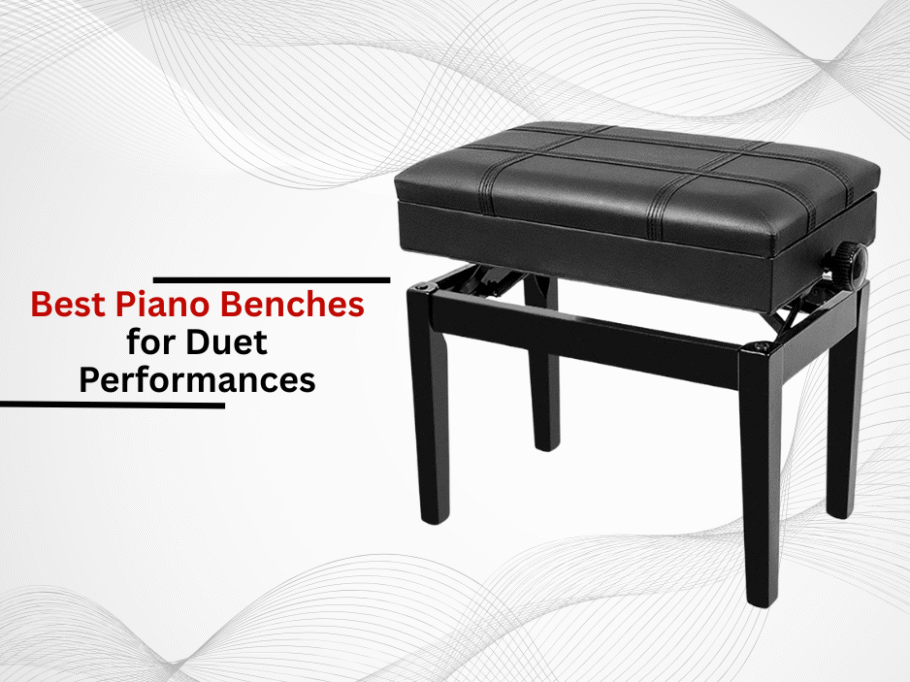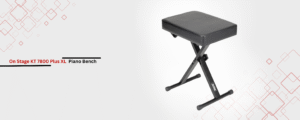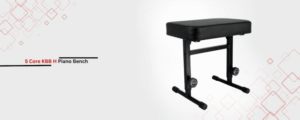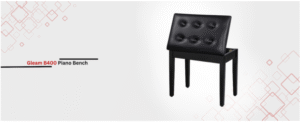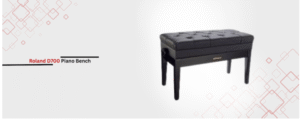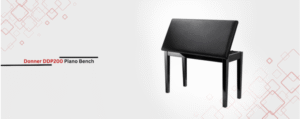When looking for a piano bench for duet performances, it should have a solid ergonomic design for support and sufficient seating space for two pianists. Duo benches are not like solo benches. Duet benches are constructed wider, more reinforced, and adaptive for seamless collaboration. Our guide covers critical factors for choosing the right bench and also looks at ideal models designed for multiple players.
To know more, read, Why a Good Piano Bench Matters More Than You Think
Important Features of a Duet Piano Bench
All performers share the same bench, which leads to critical considerations that are not present when using the bench in solo sessions.
Comfort and Balance:
The optimal width is at least 48 inches to leave optimal space for the two players. They are constructed with a wider base along with no-slip rubber feet to provide stability during intense performances. Those with cross-braced or steel-reinforced legs bolstered with utmost ergonomic support fortify the structure relative to weight.
Range of Motion:
The independence of the adjustment allows the height to be customized by each individual pianist. The ideal option for accommodating varying postures are dual hydraulic systems or synchronized spindle controls.
Construction Quality:
Heavyweight capacity over 400 pounds, alongside materials like hardwood frames, provides longevity. The upholstery should also use hard-wearing leather or fabric along with double-stitched seams.
Comfort:
Breathable upholstery and thick, high-resilience foam (2-3 inches) help combat fatigue during long rehearsals. Individualized seating zones can be created through split or contoured edge designs.
Best Piano Benches for Two Pianist Collaborations
The following benches are best suited for duet performances due to their space, comfort and sturdiness.
1. On Stage KT7800 Plus XL Bench:
Vinyl upholstery and a steel frame make the On Stage KT7800 Plus XL is economical without sacrificing durability. It offers a 50-inch-wide seat and adjustable height via a central spindle.
- Pro: Spacious design with easy height customization.
- Con: During long sessions, the padding may be too thin for comfort.
2. 5 Core KBB H Bench:
The 5 Core KBBH Bench comes with a solid 54-inch oak wood frame with a 3-inch memory foam topping. Users can independently customize the height of their bench.
- Pro: Robust construction with a premium comfort level.
- Con: A bit heavier.
Need this in bulk? You can get this from wholesale – piano bench
If you need this at the best prices, you might check out this new platform – piano bench
3. Gleam Duet Bench:
The Gleam B400 duet bench features a 52-inch walnut frame alongside a skirted top storage compartment. With an overly leather-like look, the padding lends some comfort while the traditional style boosts classic interiors.
- Pro: Useful storage for accessories or sheet music.
- Con: Height cannot be adjusted, limiting versatility in ergonomics.
4. Roland RPBD-700 Bench:
With a 48-inch steel base and a split, contoured seat, the Roland D700 bench is designed for modern pianists. The adjustable legs are equipped with locking casters for mobility.
- Pro: Personalization of comfort level with split ergonomic design.
- Con: Price is higher than basic models.
5. Donner DDP-200 Bench:
The Donner DDP200 has a 49-inch seat and it also comes with a removable storage drawer and quilted padding. The bench is made of powder-coated steel, which means it is stable for up to 440 lbs.
- Pro: Lots of usable space and also budget friendly.
- Con: Tools are needed for adjustment.
Conclusion
When looking for a duet performance bench, width, adjustability, and structural sturdiness are the most critical factors for consideration. Brands such as 5 Core, On Stage, Gleam, Roland, and Donner that provide durable, tailored solutions for collaborative players. Such products are designed using ample materials, which helps them withstand the wear and tear of use. Although there are some trade-offs, such as minimal thickness padding or loss of portability, they provide sturdiness for musicians sharing the keyboard. With the growing popularity of duet performances, develop designs using ergonomic-split designs that combine lightweight and sturdy materials.

